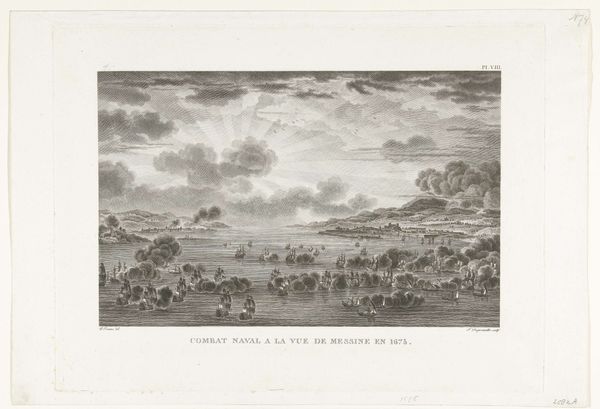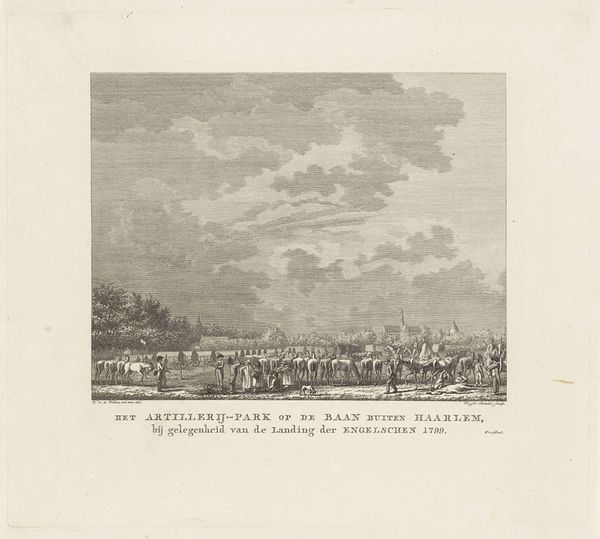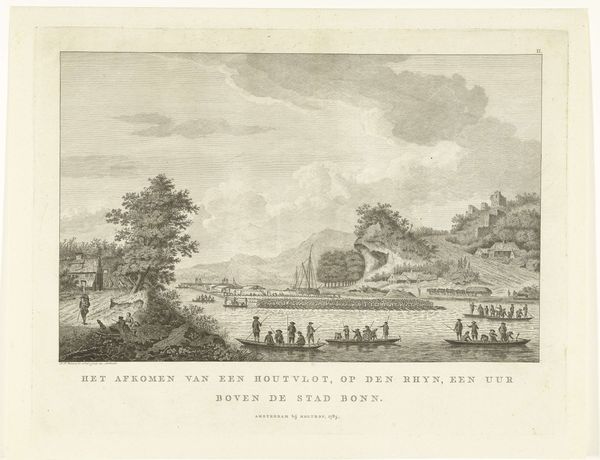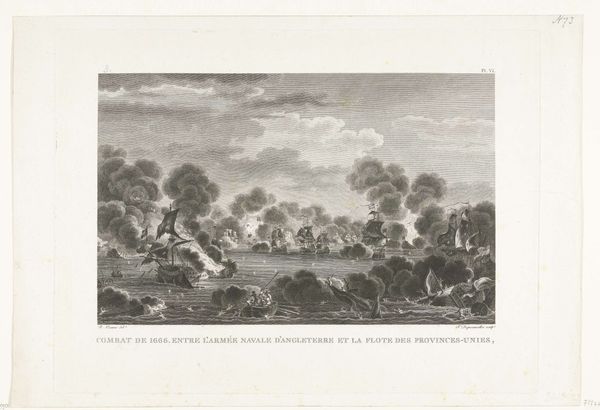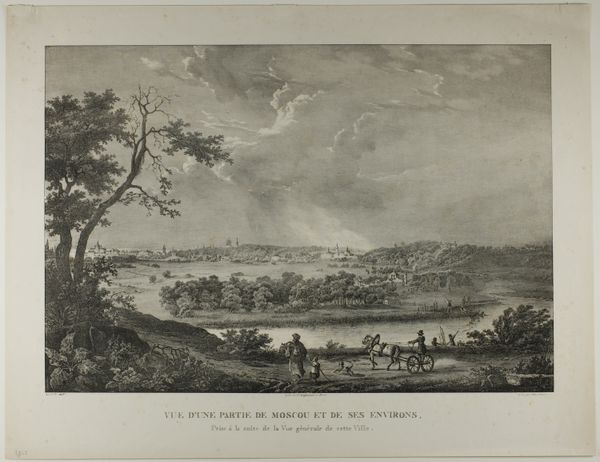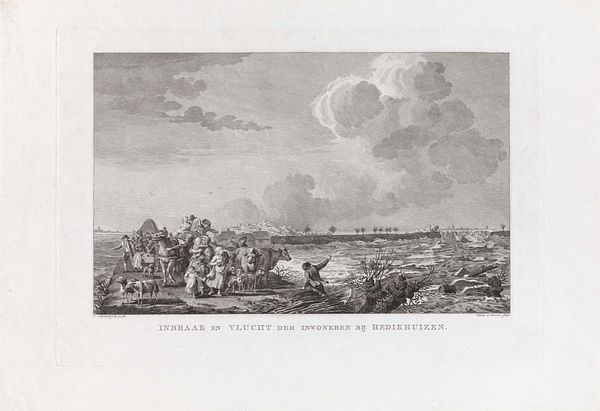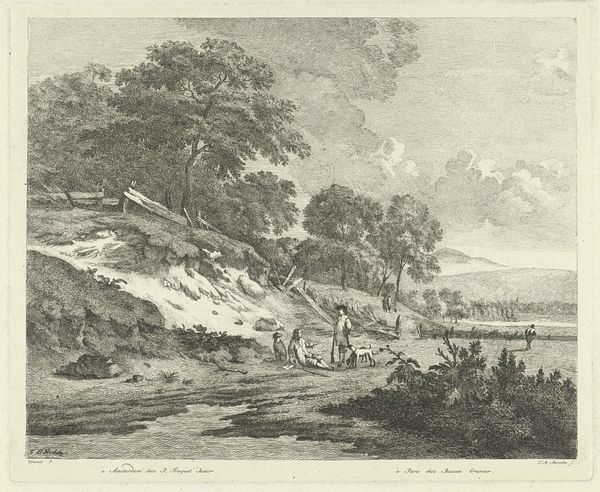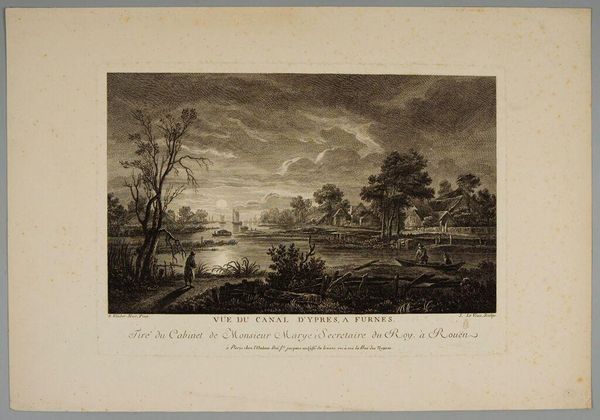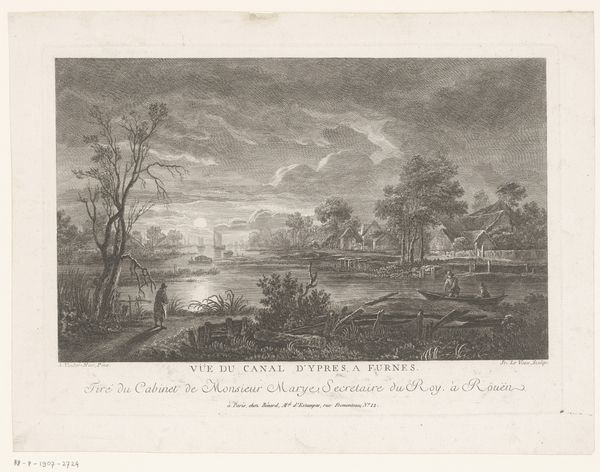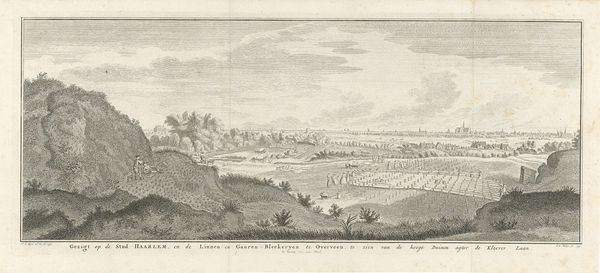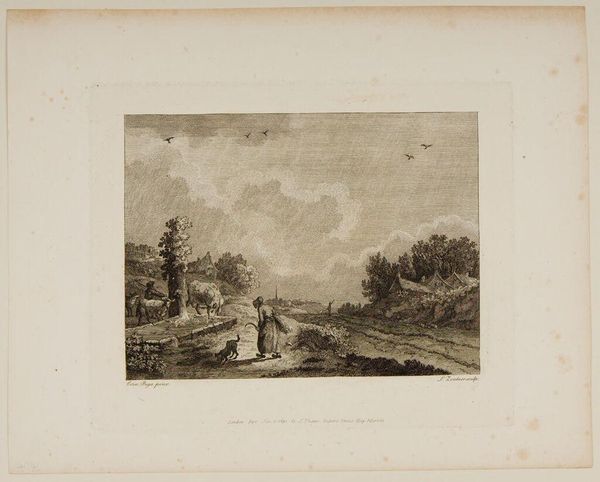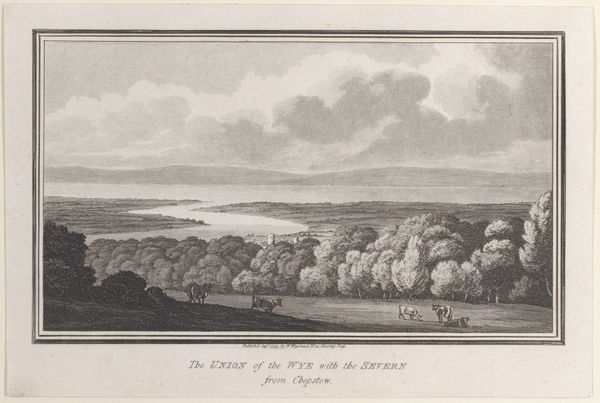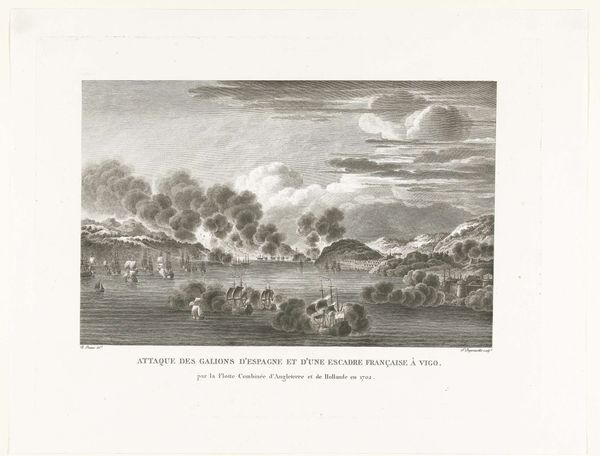
Dimensions: height 292 mm, width 392 mm
Copyright: Rijks Museum: Open Domain
Editor: Here we have "The Surrender of La Rochelle, 1628", an engraving made between 1794 and 1796, by François Nicolas Barthélemy Dequevauviller. The textures and monochrome style create an overwhelming sense of conflict and drama. How do you interpret this work in terms of its composition? Curator: Well, setting aside any contextual narrative for a moment, notice the organization of tonal values. The artist employs chiaroscuro masterfully. Dark, dense clouds of smoke are juxtaposed against areas of stark white, creating a rhythmic pulse across the image. This repetition of light and dark gives the image dynamism, wouldn’t you agree? Editor: Absolutely. It’s almost like a visual heartbeat. But isn’t the subject matter – a siege – vital to understanding that sense of dynamism? Doesn’t that affect our interpretation of those tonal juxtapositions? Curator: The subject may be an aide to understanding. However, it is important to assess the means by which an artist communicates this to us. For example, consider how the density of lines varies. In areas depicting smoke and turmoil, the lines are tightly packed and chaotic, whereas the sky exhibits longer, calmer strokes. What does this suggest about Dequevauviller’s construction of space and affect? Editor: It shows how technique directly informs the mood. It’s fascinating to see how line work can convey so much chaos. I always thought of engravings as purely representational, but this makes me see them as more expressive. Curator: Precisely. Focusing on these intrinsic qualities gives us the tools to then interrogate those representations effectively.
Comments
No comments
Be the first to comment and join the conversation on the ultimate creative platform.
